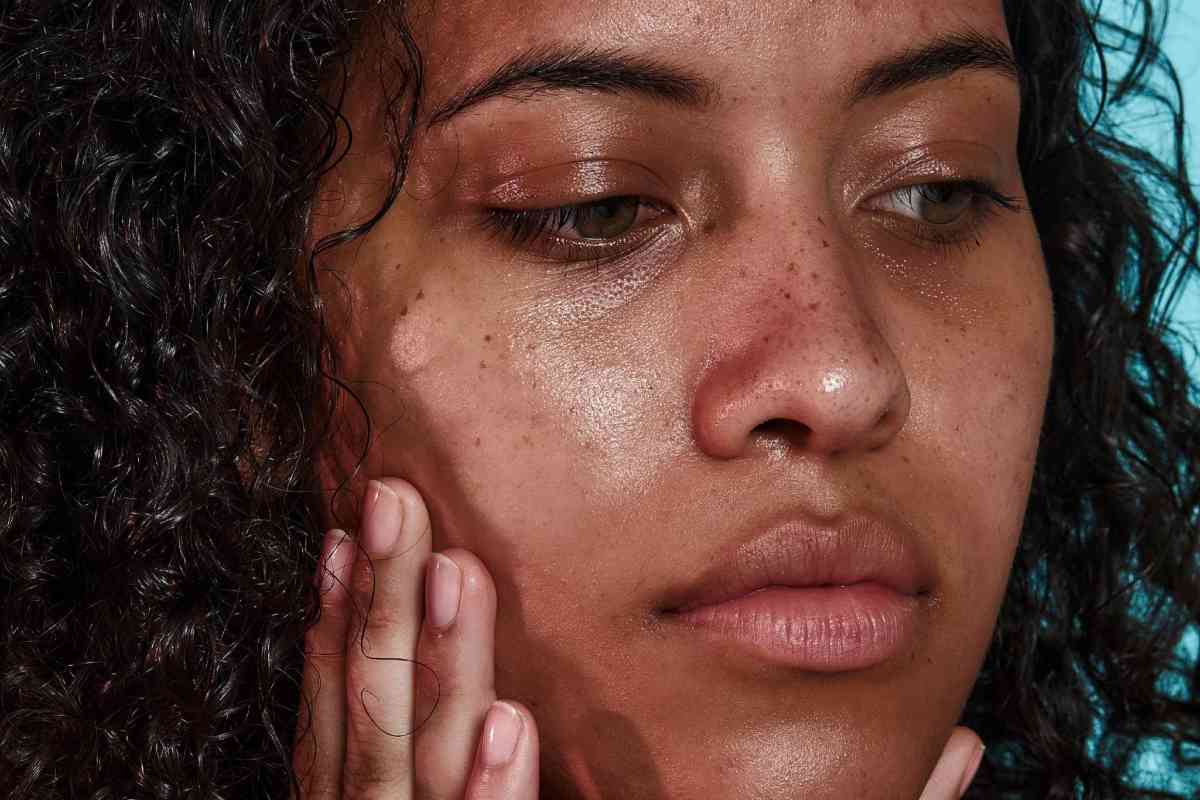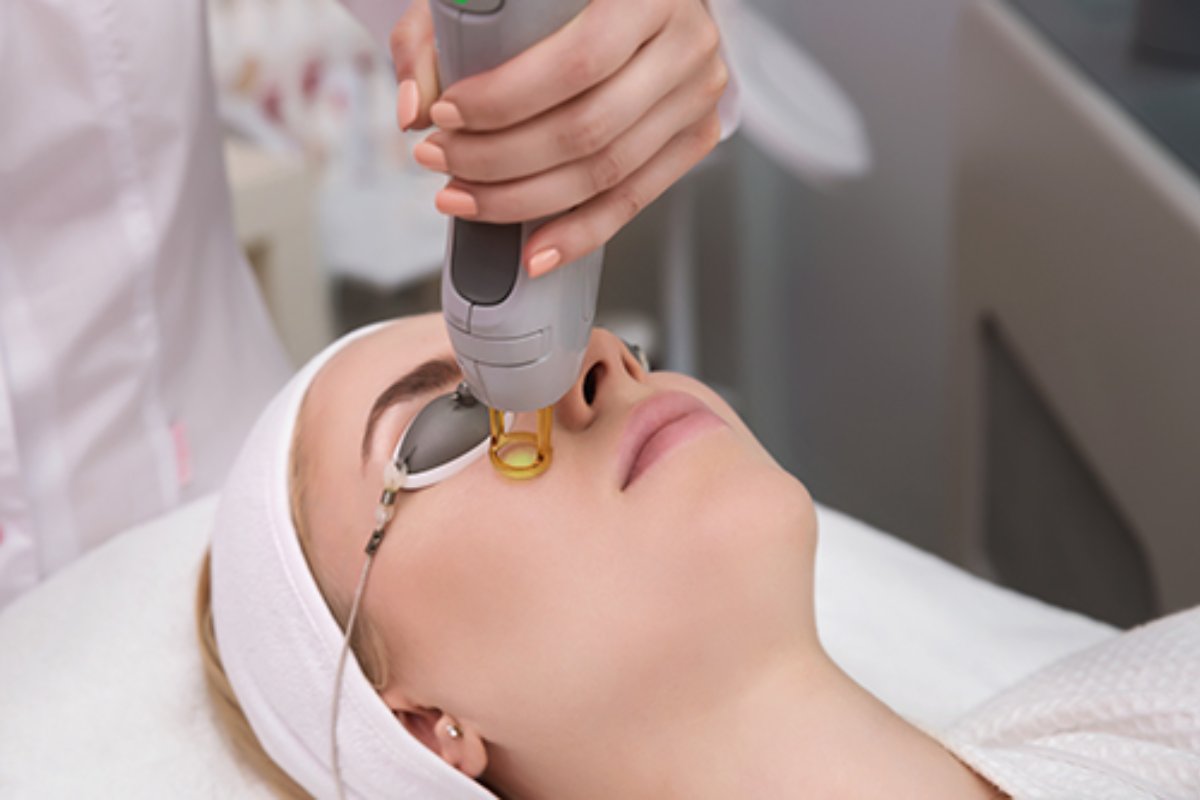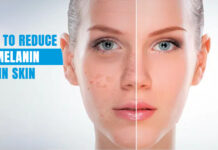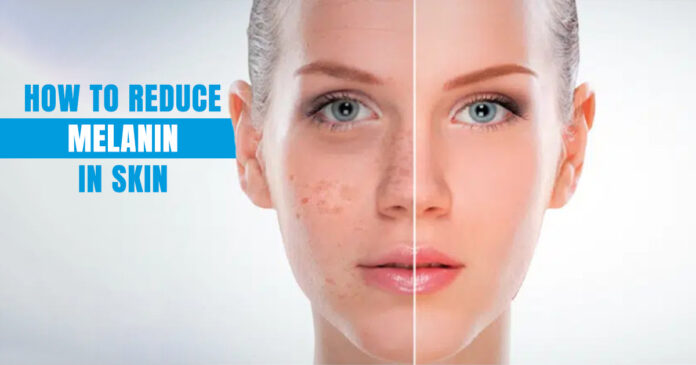Melanin is responsible for the colour of our skin, hair and eyes. Now, don’t get me wrong; it is essential, but only when it’s in the required amount. Otherwise, it can drastically affect the appearance of the skin and increase problems like hyperpigmentation and uneven skin tone. Melanin removal can be a bit of a hassle, especially when you don’t wish to damage your skin in the process. So, here is how to reduce Melanin in skin—the safe way!
Melanin and Its Importance
Melanin is the pigment that gives colour to your skin, hair and eyes. It’s created by cells called melanocytes, which are found in the outer layer of your skin. It helps to shield the skin from the sun, and increased production leads to a tan. This helps to protect your body against sunburn.
However, some people’s cells make more melanin, as well as certain types of melanin, than others. And that’s what makes their skin darker than others and have more melasma, freckles and an uneven skin tone.

How to Reduce Melanin in Skin?
In order to reduce Melanin, both professional treatments and home-based remedies can be useful. However, keep in mind that you can’t permanently eliminate Melanin as it is something that our skin needs.
Natural Remedies
Some people claim that certain natural remedies can also help. Even though there isn’t enough evidence on the effectiveness of these methods; if it’s working for others, it doesn’t hurt to try. Here is how to decrease Melanin in skin the natural way:
- Aloe Vera: Aloe Vera gel is used for a lot of skin related concerns and it is also a popular natural ingredient in reducing Melanin production. This is because the plant contains Aloesin, a compound that inhibits melanin synthesis. To use Aloe Vera, apply a thin layer of the gel to the skin and leave it on for 30 minutes before rinsing off.
- Lemon Juice: Some people also use lemon juice to reduce skin pigmentation. This is due to the high vitamin C content in lemons that prevents the formation of Melanin. Apply a thin layer of freshly squeezed lemon juice on the affected areas and leave it on for 15-20 minutes before rinsing off with water. However, do a patch test first as Lemon extract can at times cause inflammation in some skin types.
- Turmeric: Turmeric has been used for centuries in traditional medicine for its skin-brightening properties. This is due to an active compound in Turmeric called Curcumin, which helps suppress the ability of melanocytes to create more melanin and improves skin brightness. Just mix a spoonful of turmeric powder with milk or honey and create a smooth paste. Then apply it to the skin. Leave it on for 20-30 minutes before rinsing off.
Professional Treatment
One professional treatment that can help reduce melanin production in the skin is Laser Therapy. This light therapy uses high-energy light beams to target and break down melanin pigments in the skin. It can reduce the appearance of hyperpigmentation and promote a more even skin tone. There are several types of laser treatments that can be used, including ablative lasers, non-ablative lasers, and 1064 nm lasers. However, it must be understood that multiple laser therapy sessions may be required to achieve optimal results.
Another light-based therapy that is trending a lot these days is, Intense pulse light (IPL). It uses pulses of light energy to target sunspots by heating and destroying the melanin, which removes the discoloured spots. However, IPL is not recommended for people with darker skin. For people of colour, the 1064 nm laser is a safer option.

Doctors may also recommend topical creams or serums containing ingredients like hydroquinone, kojic acid, or retinoids. These ingredients inhibit melanin production and promote skin cell turnover. It is crucial to consult with a dermatologist before using these products on your skin to ensure their safety and effectiveness.
| Side Note: Whatever method is used, sunscreen should not be forgotten. If one is already using it then they must increase its use and for those not using any SPF based products and sunscreen must incorporate one in their daily routine. |
Reasons for High Melanin Production in Skin
As already stated, Melanin is produced by melanocytes in the skin. There are certain factors that increase this production and make some people suffer from increased melanin levels:
- Genetics: Determines baseline skin tone. There is high chance if your parents have high melanin levels than you will too
- Sun exposure: UV rays stimulate melanin production as a defense mechanism. This can often cause dark spots too.
- Hormonal changes: Pregnancy, birth control and medical conditions can also trigger excess melanin.
- Inflammation: Acne, injuries, or allergic reactions can lead to post-inflammatory hyperpigmentation.
- Certain medications: Some drugs can increase melanin production as a side effect.
Melanin Reducing Foods: How to Reduce Melanin in Skin Permanently By Eating
While you cannot permanently exclude melanin from the skin, you can reduce it, especially by eating certain melanin reducing foods. Many dermatologists and experts often recommend eating our skin care before applying it. Only this can give long term results.
Studies have shown that high protein and rich fibrous food enriched with vitamins disrupts melanin production in the body. These foods include:
- Watermelon
- Kiwi
- Papaya
- Dry Fruits
- Sweet Potatoes
- Berries
- Tomatoes
- Flex Seeds
- Pumpkin Seeds
Including these foods in your diet will help lighten the skin since they include high levels of antioxidants, vitamin C and glutathione.
Tanning Without Increasing Melanin
People often don’t have a problem with darker skin but the skin concerns that come with it. So anyone who wishes to get more tan without increasing Melanin levels in their skin can opt for tanning beds. This can make the skin look more tanned without getting exposed to harmful UV rays. These self tanning methods use a pigmentation effect on the skin called Melanoidin. The pigment can last a few days, and then fades as your skin produces new cells.
Remedies That Should be Avoided
Not all remedies are created equally. Some remedies can cause skin irritation, redness, or damage.
These include:
- Hydrogen peroxide
- Bleach
- Ammonia
Reducing Melanin Made Safe and Easy
You no longer have to ask,” how to reduce melanin in skin? ” Just follow the solutions stated above and remember that consistency is key! No doubt, the melanin levels in your skin will be reduced without a doubt. And if nothing works (which is a big “if”), then we would recommend consulting a dermatologist, as there is a chance that there might be more problems with the skin than is visible.
Stay tuned to Brandsynario for latest news and updates







































